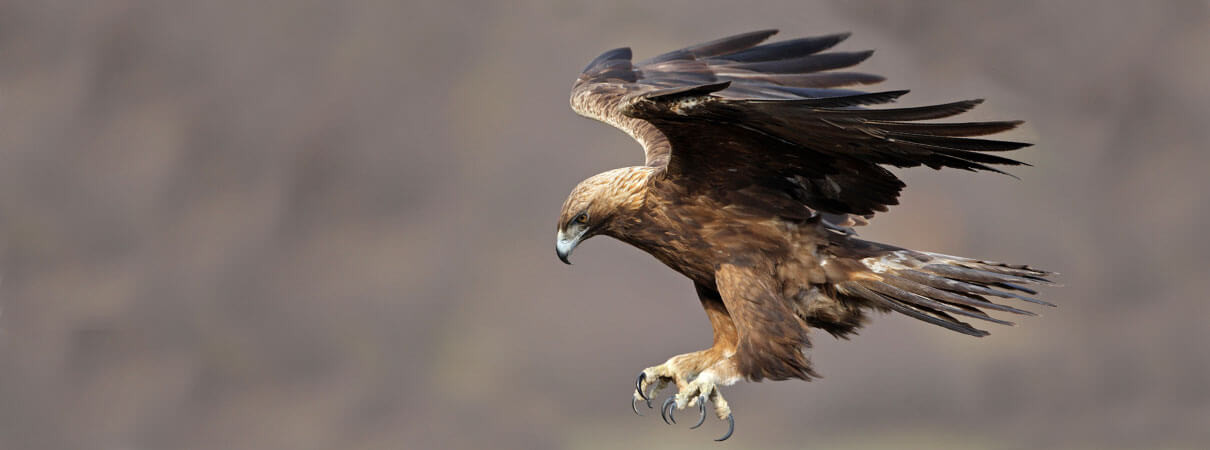Twenty-five million years ago, Pelagornis sandersi ruled the skies with an astonishing 24-foot wingspan, dwarfing even today’s largest birds. While no modern bird reaches that prehistoric scale, the avian world still boasts some truly immense species. Defining the “biggest flying bird in the world,” however, isn’t as simple as it seems. Bird size can be measured in various ways: body length, wingspan, or weight. Each measurement can point to a different champion, and factors like flight capability and habitat further complicate the answer.
Instead of searching for a single definitive answer, let’s explore some of the most impressive contenders for the title of biggest flying bird in the world, categorized by what makes them truly remarkable.
The Wandering Albatross: King of Wingspan
 Wandering Albatross with massive wingspan soaring over the ocean
Wandering Albatross with massive wingspan soaring over the ocean
When it comes to sheer wingspan, the Wandering Albatross reigns supreme, not just in the Americas, but globally. This magnificent seabird boasts a wingspan that can reach a staggering 11 feet (3.35 meters). To put that in perspective, that’s wider than many cars are long! Found predominantly in the Southern Hemisphere’s lower reaches, the Wandering Albatross spends most of its life soaring over the open ocean, only returning to land every couple of years to breed.
These incredible birds are true marathon fliers, capable of covering up to 600 miles in a single day, harnessing wind currents with unparalleled efficiency. Over their long lifespans, some Wandering Albatrosses are estimated to fly the equivalent of 18 round trips to the moon. Despite their remote oceanic habitat, they face significant threats from human activities, including climate change, marine pollution, overfishing, and bycatch from fishing operations. The Wandering Albatross is currently listed as Vulnerable, highlighting the need for continued conservation efforts to protect these aerial giants.
Andean and California Condors: Colossal Land Birds in Flight
 Comparison of Andean Condor and California Condor in flight
Comparison of Andean Condor and California Condor in flight
For the largest flying land birds in the Americas, we turn to the impressive Andean Condor and California Condor. While both are scavengers with vital roles in their ecosystems, there are subtle differences in their size. The California Condor is slightly longer in body length, reaching about 4.5 feet (1.37 meters), compared to the Andean Condor’s four feet (1.22 meters). However, the Andean Condor outweighs its northern cousin, tipping the scales at around 33 pounds (15 kilograms) and possessing a slightly larger wingspan of 10.5 feet (3.2 meters).
These birds, inhabiting vastly different ranges – the Andes Mountains and the desert Southwest of North America respectively – share remarkable similarities. Both are scavengers, feeding on carrion, and are known for their exceptional longevity. Tragically, both species have also faced severe threats from human activities, including lead poisoning from ammunition, habitat loss, and hunting. California Condors narrowly avoided extinction, with their population dwindling to just 22 birds in the 1980s. Thanks to intensive captive breeding programs, their numbers have rebounded to around 290 in the wild, though they remain Critically Endangered. Andean Condors are listed as Near Threatened, and conservation efforts are crucial to secure their future.
Harpy Eagle: The Americas’ Largest Aerial Predator
 Majestic Harpy Eagle perched in the rainforest canopy
Majestic Harpy Eagle perched in the rainforest canopy
Shifting our focus to birds of prey, the Harpy Eagle stands out as the largest hunting bird in the Americas, and one of the most powerful eagles in the world. Weighing in at a substantial 20 pounds (9 kilograms), this apex predator roams the extensive lowland forests of Central and South America. The Harpy Eagle is a formidable hunter, equipped with legs as thick as a human arm and talons rivaling the size of grizzly bear claws. These features allow them to capture and carry substantial prey, including sloths, monkeys, and other sizable animals.
Harpy Eagles require vast hunting territories to thrive, sometimes exceeding 10,000 acres. However, the ongoing destruction of tropical forests is shrinking their habitat and impacting their populations, leading to their Near Threatened status. Protected reserves play a vital role in safeguarding these magnificent raptors and their forest homes.
Golden Eagle: North America’s Premier Hunter
 Golden Eagle in flight against a mountainous backdrop
Golden Eagle in flight against a mountainous backdrop
In North America, the Golden Eagle takes the crown as the largest hunting bird. With a wingspan reaching over seven feet (2.1 meters), these eagles are not only impressively sized but also incredibly skilled aerial hunters. Golden Eagles are renowned for their speed and agility, capable of diving at prey at speeds approaching 200 miles per hour (320 kilometers per hour). While their diet primarily consists of rabbits, squirrels, and prairie dogs, they are known to take down much larger prey, including seals, bighorn sheep, and even coyotes.
Golden Eagles boast the largest range of any eagle species, spanning much of the Northern Hemisphere. In North America, they inhabit diverse environments, from deserts to arctic regions, with a stronghold in the western United States. Despite legal protections, Golden Eagles continue to face threats, particularly from wind turbine development in key habitats. The ongoing balance between renewable energy and wildlife conservation remains a critical issue for the future of these magnificent birds.
While the extinct Pelagornis sandersi holds the record for the largest wingspan of any bird known to science, today’s skies are still graced by impressive avian giants. From the immense wingspan of the Wandering Albatross to the powerful build of the Harpy Eagle, defining the “biggest flying bird” depends on the criteria you prioritize. Each of these birds represents the incredible diversity and adaptations within the avian world, and underscores the importance of ongoing conservation efforts to ensure these magnificent creatures continue to soar for generations to come.